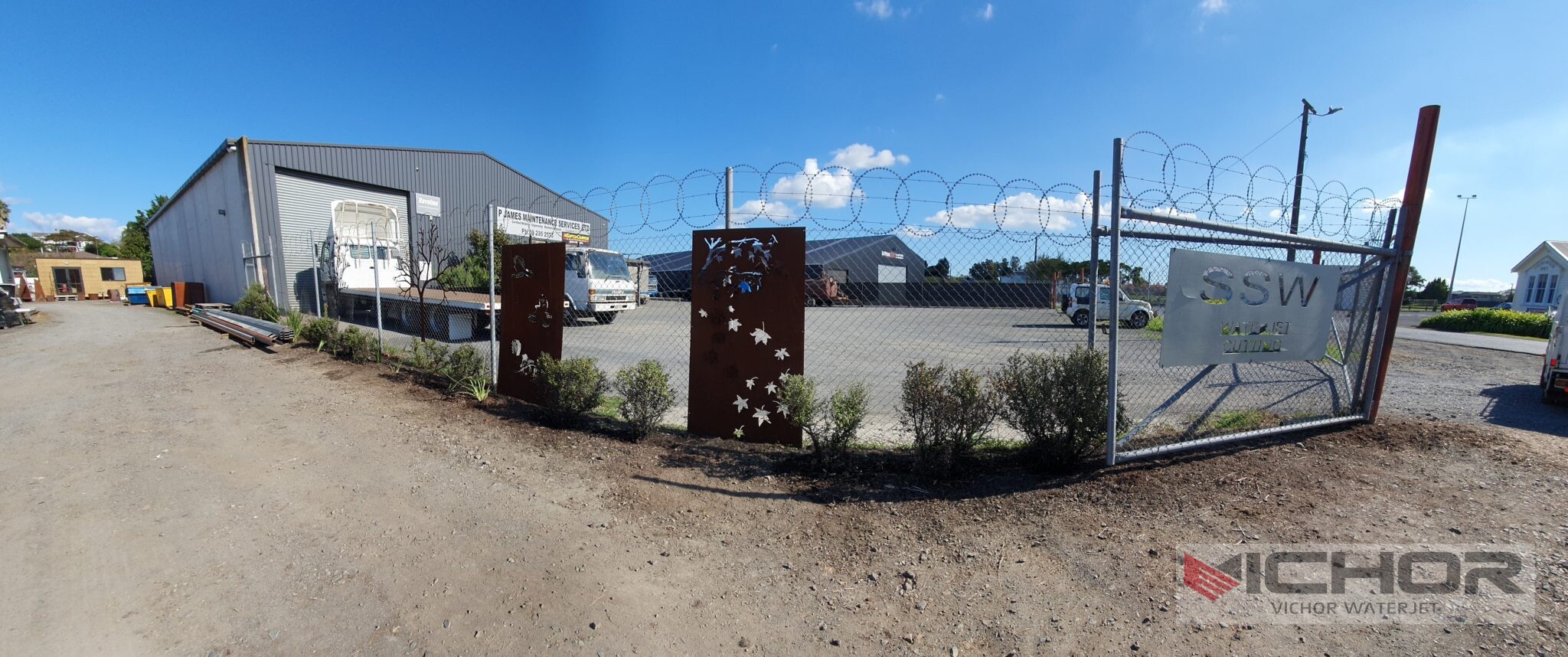
5 Essential Aspects of Water Cutting Through Steel You Need to Understand
Water cutting through steel might sound like something out of a science fiction novel, but it is a real and highly efficient industrial process that has revolutionized manufacturing and fabrication. This technology, known as waterjet cutting, utilizes high-pressure water streams—sometimes mixed with abrasive materials—to slice through tough materials like steel with remarkable precision. Unlike traditional methods that involve heat or mechanical force, water cutting through steel offers a cool, clean, and versatile alternative. In this article, we will explore five key aspects of water cutting through steel, shedding light on how this innovative technique works, its benefits, applications, and more. Whether you’re in engineering, construction, or simply curious about advanced technologies, understanding water cutting through steel can provide valuable insights into modern industrial practices. By the end, you’ll appreciate why this method is gaining popularity across various sectors.
The Science Behind Water Cutting Through Steel
Water cutting through steel operates on fundamental principles of physics and engineering. At its core, the process involves pressurizing water to extremely high levels—often up to 60,000 psi or more—and then forcing it through a small nozzle to create a focused, high-velocity stream. When targeting steel, this stream can reach speeds sufficient to erode and cut through the material. In many cases, abrasive particles like garnet are added to the water jet to enhance its cutting power, especially for thicker or harder steels. This combination of high pressure and abrasives allows water cutting through steel to achieve clean, precise cuts without generating heat, which is a common issue with laser or plasma cutting. The absence of heat-affected zones means that the structural integrity of the steel remains intact, reducing the risk of warping or metallurgical changes. This aspect of water cutting through steel makes it ideal for sensitive applications where material properties must be preserved. Moreover, the process is highly controllable, enabling operators to adjust parameters like pressure, flow rate, and abrasive mix to suit different types of steel, from mild to stainless varieties. Understanding the science behind water cutting through steel reveals why it is such a reliable and efficient method, leveraging fluid dynamics and material science to achieve results that traditional tools cannot match.
Advantages of Using Water Cutting Through Steel
One of the most compelling reasons for adopting water cutting through steel is its numerous advantages over conventional cutting techniques. First and foremost, water cutting through steel is a cold-cutting process, meaning it does not produce heat during operation. This eliminates the risk of thermal distortion, hardening, or other heat-related damages that can compromise steel components. Additionally, water cutting through steel is incredibly versatile—it can handle a wide range of steel thicknesses and types, from thin sheets to heavy plates, without requiring tool changes. This flexibility reduces downtime and increases productivity in industrial settings. Another key benefit is the environmental friendliness of water cutting through steel; it uses water and natural abrasives, minimizing hazardous waste and reducing the carbon footprint compared to methods that involve chemicals or generate fumes. The precision of water cutting through steel is also noteworthy, as it allows for intricate designs and tight tolerances, making it suitable for industries like aerospace and automotive where accuracy is critical. Furthermore, water cutting through steel is a safe process when proper protocols are followed, as it reduces the risk of sparks or fires associated with thermal cutting. Overall, the advantages of water cutting through steel contribute to lower costs, higher quality outcomes, and enhanced sustainability, making it a preferred choice for many manufacturers.
Applications of Water Cutting Through Steel in Various Industries
Water cutting through steel has found widespread applications across diverse industries due to its adaptability and precision. In the automotive sector, it is used for cutting complex parts from steel sheets, such as body panels and engine components, where accuracy and material integrity are essential. The aerospace industry relies on water cutting through steel for manufacturing turbine blades, structural elements, and other critical parts that demand high strength and minimal defects. In construction and architecture, water cutting through steel enables the creation of detailed steel frameworks, decorative elements, and custom fittings without compromising the material’s properties. The shipbuilding industry also benefits from this technology, using it to cut steel plates for hulls and superstructures with smooth edges that require little to no post-processing. Moreover, water cutting through steel is employed in the art and design world for sculpting steel artworks and installations, showcasing its ability to handle creative and non-standard shapes. Even in the medical field, it aids in producing precise steel components for devices and equipment. The versatility of water cutting through steel means it can be integrated into both large-scale production lines and small custom shops, demonstrating its broad utility. As industries continue to evolve, the applications of water cutting through steel are expanding, driven by the need for efficient, high-quality cutting solutions.
Types of Waterjet Systems for Cutting Through Steel
When it comes to water cutting through steel, there are primarily two types of waterjet systems: pure waterjet and abrasive waterjet. Pure waterjet systems use only high-pressure water to cut through softer materials, but for steel, abrasive waterjet systems are more commonly employed. In abrasive waterjet cutting, the water stream is mixed with abrasive granules, such as garnet or aluminum oxide, which amplify the cutting force enough to slice through hard metals like steel. This type of water cutting through steel is highly effective for thick sections and can achieve depths of several inches. Another distinction lies in the system configurations: some are standalone units, while others are integrated into CNC (Computer Numerical Control) platforms for automated precision. CNC-guided water cutting through steel allows for complex patterns and repeatable cuts, enhancing efficiency in mass production. Additionally, there are portable systems for on-site applications, though these are less common for heavy steel cutting. The choice between systems depends on factors like the thickness of the steel, desired cut quality, and budget. For instance, pure waterjet might suffice for thin steel foils, but abrasive systems are necessary for most industrial-grade steel cutting. Understanding the types of waterjet systems for water cutting through steel helps users select the right equipment for their specific needs, ensuring optimal performance and cost-effectiveness.
Precision and Quality in Water Cutting Through Steel
The precision and quality achieved with water cutting through steel are among its most praised features. This method can produce cuts with tolerances as tight as ±0.1 mm, making it suitable for high-precision industries. The edge quality from water cutting through steel is typically smooth and burr-free, reducing the need for secondary finishing processes like grinding or deburring. This is particularly important in applications where surface integrity affects performance, such as in medical implants or aerospace components. The ability of water cutting through steel to maintain consistent quality across multiple cuts is enhanced by computer-controlled systems that follow digital designs accurately. Unlike mechanical cutting, which can cause micro-fractures or stress concentrations, water cutting through steel exerts minimal force on the material, preserving its original strength and characteristics. Additionally, the process allows for sharp corners and intricate details without tool wear issues, as there is no physical contact between the cutter and the steel. This results in longer tool life and lower maintenance costs. Quality control in water cutting through steel often involves monitoring parameters like pressure and abrasive flow to ensure uniform results. Overall, the precision and quality offered by water cutting through steel make it a superior choice for applications demanding exactness and reliability, contributing to higher product standards and customer satisfaction.
Water cutting through steel represents a significant advancement in material processing, combining innovation with practicality to meet the demands of modern industry. From its scientific foundations to its diverse applications and superior quality, this method offers a sustainable, precise, and versatile solution for cutting steel. As technology continues to improve, water cutting through steel is likely to become even more efficient and accessible, driving further adoption across sectors. By understanding these five aspects—the science, advantages, applications, system types, and precision—readers can appreciate why water cutting through steel is more than just a niche technique; it is a transformative tool shaping the future of manufacturing. Whether for industrial use or educational purposes, the insights into water cutting through steel highlight its role in enhancing productivity, reducing environmental impact, and enabling new possibilities in design and engineering.
Frequently Asked Questions
Q1: What is water cutting through steel, and how does it work?
A1: Water cutting through steel, also known as waterjet cutting, is a process that uses a high-pressure stream of water—often mixed with abrasives—to erode and slice through steel. The water is pressurized to extreme levels and focused through a nozzle, creating a jet that can cut with precision without generating heat.
Q2: What are the main benefits of using water cutting through steel compared to other methods?
A2: The key benefits include no heat-affected zones, which prevents warping or hardening of the steel; versatility in cutting various thicknesses and types of steel; environmental friendliness due to minimal waste; high precision for intricate designs; and enhanced safety by reducing fire risks.
Q3: In which industries is water cutting through steel commonly used?
A3: Water cutting through steel is widely used in industries such as automotive for parts manufacturing, aerospace for critical components, construction for structural elements, shipbuilding for hull plates, and even in art and medical fields for precise and custom cuts.
Q4: Are there different types of systems for water cutting through steel?
A4: Yes, there are two main types: pure waterjet systems for softer materials and abrasive waterjet systems for steel, which incorporate abrasives to enhance cutting power. Systems can vary from CNC-controlled setups for automation to portable units, with abrasive types being essential for effective steel cutting.
Q5: How precise is water cutting through steel, and what about the edge quality?
A5: Water cutting through steel is highly precise, with tolerances often within ±0.1 mm, and it produces smooth, burr-free edges that typically require no additional finishing. This makes it ideal for applications where detail and material integrity are crucial.
continue reading
Related Posts
- 1696 words8.5 min read
- 1991 words10 min read




